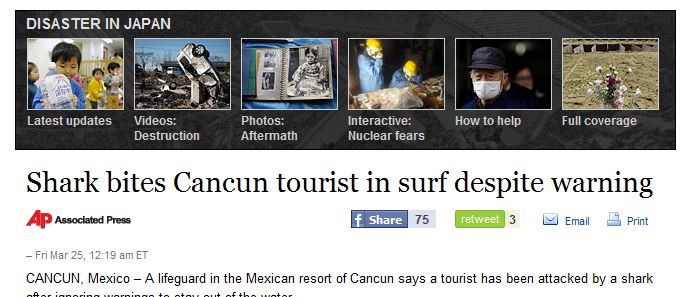Some may drop an evil eye on me right now, but we are hitting 90 degrees down here in South Florida. With that comes the warnings for Heat Related Injuries at the range and time to remind everybody about them.
This guide is a sticky in out club’s forum and we bump it every time the temp goes back to abnormal hell on earth. I hope it helps and please share with everybody.
Heat Exhaustion & Heatstroke. (Please read carefully)
Since we are blessed by living in South Florida and enjoy hot weather, this is a reminder for EVERYBODY on Heat Exhaustion & Heatstroke.
Please do take a moment to read through and learn the symptoms. As one that has suffered both, the first thing I will tell you is that it sneaks on you and by the time you realize you are sick (if at all) you are on your way to a hospital.
If during a match you suspect somebody is suffering from Heat Exhaustion or Heatstroke, don’t be shy and pull him/her out to safety. Notify the Match Director or any Club Officer or anybody you know with first aid, paramedic, medical experience so treatment can start right then and there. Range Safety also includes accidents other than gunshot wounds and ricochets.
Heat exhaustion
Definition
By Mayo Clinic staff
Heat exhaustion is a condition whose symptoms may include heavy sweating and a rapid pulse, a result of your body overheating. It’s one of three heat-related syndromes, with heat cramps being the mildest and heatstroke being the most severe.
Causes of heat exhaustion include exposure to high temperatures, particularly when combined with high humidity, and strenuous physical activity. Without prompt treatment, heat exhaustion can progress to heatstroke, a life-threatening condition. Fortunately, heat exhaustion is preventable.
Signs and symptoms of heat exhaustion may come on suddenly or may develop after days of heat exposure. Possible heat exhaustion signs and symptoms include:
* Cool, moist skin with goose bumps when in the heat
* Heavy sweating
* Faintness
* Dizziness
* Fatigue
* Weak, rapid pulse
* Low blood pressure upon standing
* Muscle cramps
* Nausea
* Headache
If you think you’re experiencing heat exhaustion:
* Stop all activity and rest
* Move to a cooler place
* Drink cool water or sports drinks
Contact your doctor if your signs or symptoms worsen or if they don’t improve within 60 minutes. Seek immediate medical attention if your body temperature reaches 104 F (40 C) or higher.
Heatstroke
Definition
By Mayo Clinic staff
Heatstroke is a life-threatening condition that occurs when your body temperature reaches 104 F (40 C) or higher. Heatstroke can be brought on by high environmental temperatures, by strenuous physical activity or by other conditions that raise your body temperature. Whatever the cause, you’ll need immediate medical attention to prevent brain damage, organ failure or death.
Heatstroke is the escalation of two other heat-related health problems: heat cramps and heat exhaustion. In these conditions, you develop signs and symptoms that are milder than those of heatstroke. You can prevent heatstroke if you receive medical attention or take self-care steps as soon as you notice problems.
Symptoms
By Mayo Clinic staff
Heatstroke symptoms include:
* High body temperature. A body temperature of 104 F (40 C) or higher is the main sign of heatstroke.
* A lack of sweating. In heatstroke brought on by hot weather, your skin will feel hot and dry to the touch. However, in heatstroke brought on by strenuous exercise, your skin usually feels moist.
* Flushed skin. Your skin may turn red as your body temperature increases.
* Rapid breathing. Your breathing may become rapid and shallow.
* Racing heart rate and strong pulse (tachycardia). Your pulse may significantly increase because heat stress places a tremendous burden on your heart to help cool your body.
* Headache. You may experience a throbbing headache.
* Neurological symptoms. You may have seizures, lose consciousness, slip into a coma, hallucinate, or have difficulty speaking or understanding what others are saying.
* Muscle cramps or weakness. Your muscles may feel tender or cramped in the early stages of heatstroke, but may later go rigid or limp.
When to see a doctor
If you think you have heat cramps or the beginning signs and symptoms of heat exhaustion, first try to cool yourself and replenish your water and salt levels. [b]If your condition has progressed past heat cramps and heat exhaustion and you feel any of the symptoms of heatstroke, seek immediate medical attention.



Like this:
Like Loading...








